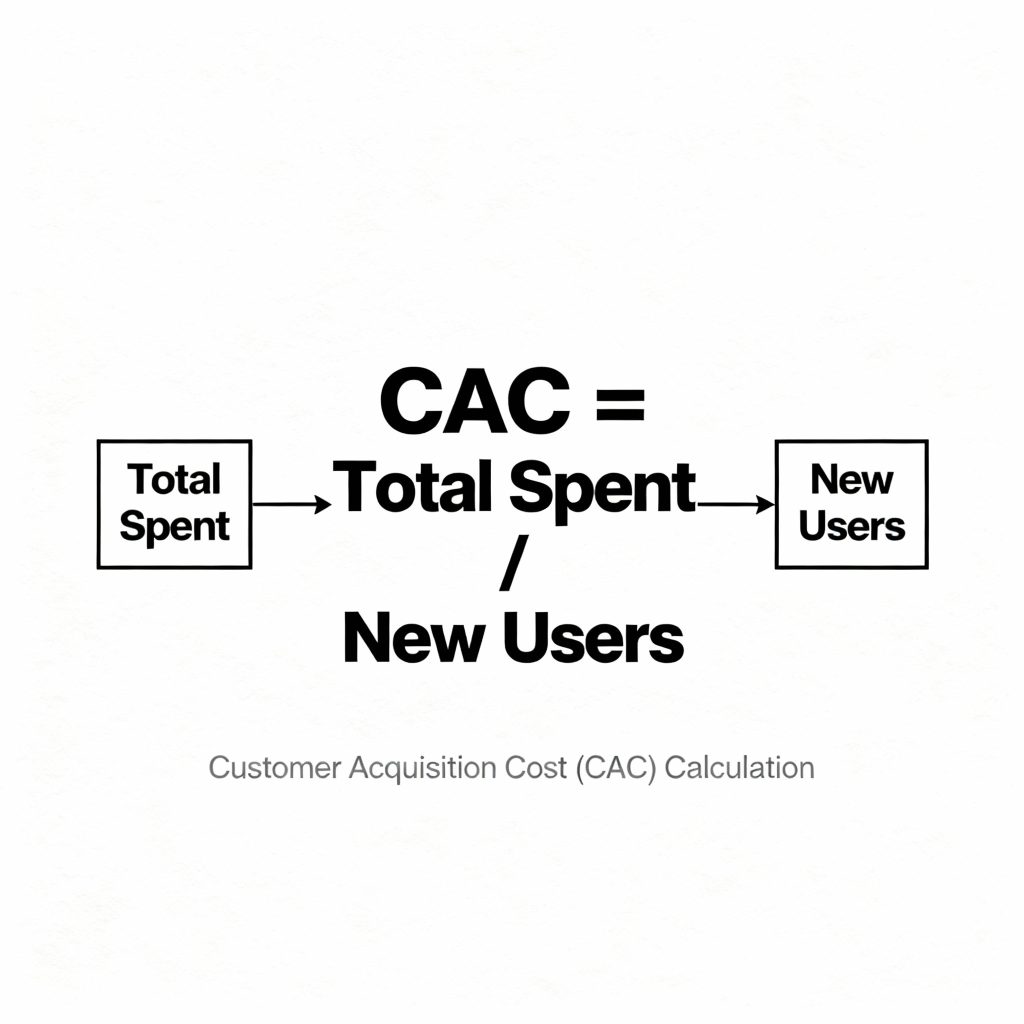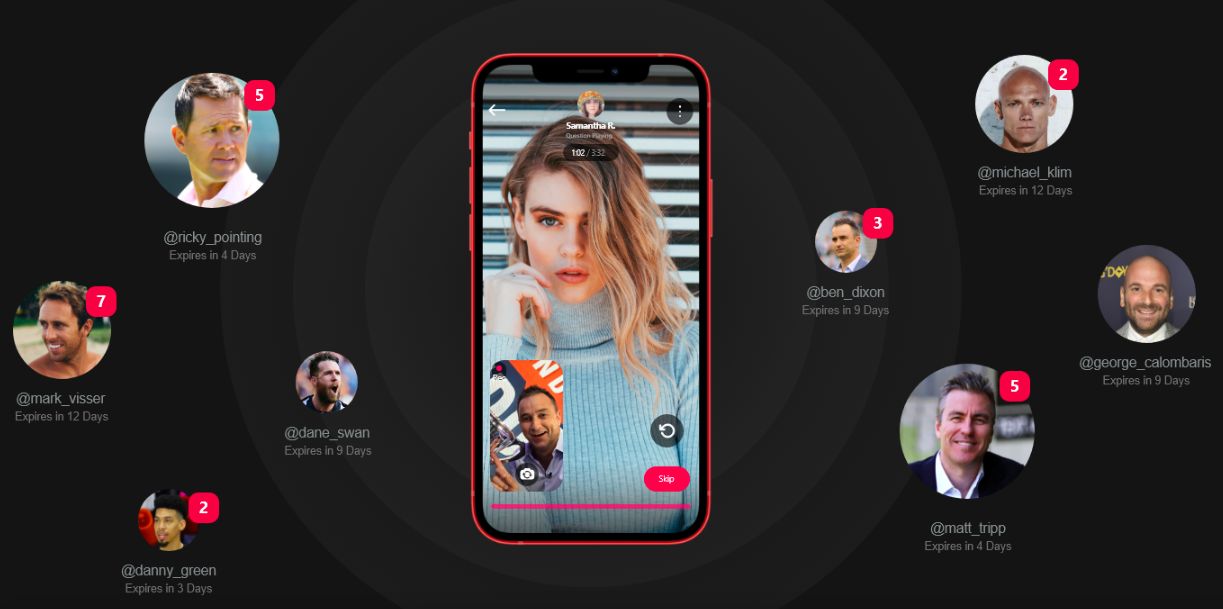Customer Acquisition Cost for Apps in 2025: What’s Normal, What’s Changing, What Actually Works

Have a mobile app? You’re in a real contest for attention and users. That’s the reality.
“Many apps have very similar names in the app stores. Being able to stand out and create a more distinct app upfront, like unique descriptions, a good header, or a good title, will set you apart from competitors with the same name,” as Brian Wong, one of our product managers, told me.
This is possible with app store optimization. You see, most app publishers want better results, lower user acquisition cost, real app growth, and a user base that sticks, not just more downloads for a week or one short splash of popularity.
Customer acquisition cost for apps is what you spend to get each new user. It’s not just your ad budget. It’s everything: paid campaigns, content, team time, creative tools, influencer fees, agency support, and anything you invest to get folks to choose your product.
2025 App user acquisition costs: The truth behind the numbers
| Category | Global Avg CPI* | iOS | Android | North America | AU/Asia |
|---|---|---|---|---|---|
| All apps | $2.24–$2.85 | $4.10–$4.70 | $3.00–$3.40 | $4.50–$5.28 | $1.50–$2.00 (APAC/EMEA $0.93–$1.03) |
| Gaming | $3–$6 | $4–$7 | $2–$5 | $5–$8 | $2–$4 |
| Shopping | $5–$11 | $8–$14 | $5–$10 | $8–$13 | $3–$7 |
| Fintech | $7–$20+ | $12–$44 | $11–$32 | $22–$51 | $9–$22 |
*Sources: Business of Apps, Adapty, Mapendo, Social Plus, Survicate.
My takeaways
Here’s my observation based on the data I’ve collected from several resources:
- For most mobile apps, the global average cost per install (CPI) falls between $2 and $3. Expect to pay a premium on iOS, which typically runs higher than Android thanks to that audience’s higher lifetime value and purchasing power.
- Gaming apps land at $3–$6 per install globally, but if you’re targeting North America or prioritizing iOS users, you’ll see those costs reach the upper end of that range, sometimes even more.
- Shopping apps see even steeper CPIs, usually $5–$11 worldwide. Again, the markets with the biggest buying power —North America and iOS —push acquisition costs to the top of that bracket.
- Fintech apps stand out as the priciest vertical, with most campaigns running above $10 per install and many reaching $20 to $35 or more on iOS and in mature North American markets. That’s the price of playing in one of the most competitive and regulated fields in the mobile app industry.
- Looking for cost-effective expansion? Australia and the Asia-Pacific are your best bets, where you’ll often see general app CPIs at just $1.50–$2.00. Founders in those markets consistently report more efficient audience growth while still driving high engagement.
My (unsolicited) advice to founders?
Every market (and every vertical) comes with its own pricing landscape and performance benchmarks.
Understanding the actual distribution of CPI by category and geography helps you forecast budgets. It also empowers smarter campaign strategies and resource allocation.
Now that you’ve got the numbers that matter, use them to build a roadmap rooted in data, not guesswork.
Why are customer acquisition costs for apps still going up?
There are several factors that play a role, and I’ve listed them below with my hot takes.
1. Privacy: Apple changed the game (literally)
Remember when you could target audiences with laser precision and calculate customer acquisition cost down to the cent? Well, thanks to Apple’s App Tracking Transparency (ATT), acquiring users in the mobile app market means playing by new privacy rules.
It’s not just about adjusting your programmatic advertising; you’re working in the dark, missing 70% of the data you used to have on user actions and segment audiences. That means less effective user acquisition campaigns, more wasted marketing costs, and sky-high mobile user acquisition costs for every install.
2. There’s a traffic jam in paid ads
Paid ads aren’t what they used to be. Now, every daily active user is bombarded with noise. Facebook ads CPI (cost per install) keeps rising, and programmatic advertising auctions are stuffed with marketing campaigns from every corner of the app market.
This overcrowding means your user acquisition strategy needs a bigger budget just to reach the same pool of app users you got last year. The average customer acquisition costs for mobile apps have jumped by 60% over the past five years. More users are available, but acquisition channels are clogged, and everyone’s spending more to get less.
3. Creatives and influencers are no longer cheap thrills
Think you’ll stand out with a basic banner? Not anymore. Today’s user acquisition channels demand diverse creatives. Think influencer marketing, eye-catching video, and push notifications to keep users engaged.
I actually found Ramdam quite amusing, which is a platform for app developers and publishers to find creators who can help them amplify campaigns. Disclaimer, though: we’re not endorsing this, but I’m just giving you an example of how you can actually use influencer marketing for your mobile apps, though this is actually a bit costly.

Source: ram.dam
4. Organic discovery is pay-to-play
Organic traffic from the app store? That’s ancient history.
These days, mobile app discoverability revolves around app store optimization (ASO), and it’s an arms race. Whether you’re updating your app store listings for better keywords or hiring pros for professional visuals, app store optimization is a required expense (not a bonus), which adds to your customer acquisition cost (CAC).

Source: Google Ads
5. Retention rabbit hole where users tune out fast
You might acquire new users, but holding onto them is a different story. App users today scroll past thousands of ads, let alone your paid campaigns. Mobile app user acquisition isn’t just about downloads; it’s about turning install spikes into active, paying customers.

Effective user acquisition and retention depend on how well you can monitor key metrics and use data driven insights to keep your user base engaged after that first app download. Otherwise, all that work in acquiring users just means higher churn (and higher CAC) every quarter.
So what’s the bottom line?
If you want more users and actual customers acquired, you have to be laser-focused on every marketing channel, calculate CAC at every stage, and adapt your user acquisition strategy constantly.
The mobile app market moves fast, so winning teams are testing, leveraging predictive analytics, and staying nimble because reacting slowly is one luxury modern app developers can’t afford.
What’s the true cost: more than a formula
When you calculate customer acquisition cost, grab all your marketing costs for a specific period—ad money, partnerships, content, influencer, your team’s time, tech subscriptions, push notifications, app store listing changes… then divide by new users acquired.
If you’re running a user acquisition campaign across multiple channels, work it out for each. It’s the only way to spot expensive dead ends.

(PS: Some folks count only paid channels, but I tell founders: count everything or you’ll never see the whole picture.)
How I’ve seen apps bring down mobile user acquisition cost
Here’s what works:
- Make the most of your story with app store listings that actually match what users want, not just what the algorithm expects.
- Use push notifications only if you have something worth saying—users have radar for spam.
- If you’re in mobile gaming or apps with subscriptions, focus not just on acquiring new users but giving them a good reason to return each day. Growing daily active users keeps the average user acquisition cost from creeping up.
- Track every step. There’s always a point where users drop or stall—fix that before you spend more.
How do we lower customer acquisition costs for apps?
I’ll share Vello’s inspiring app success story and unique ways of acquiring new users. Of course, the goal is to make users stay in your ecosystem and, hopefully, become brand ambassadors and evangelists.

Developed by Appetiser, Vello effectively uses these strategies to reduce customer acquisition costs (CAC) and drive growth:
Case study: Vello
1. Celebrity partnerships
Vello has built a database of over 1,000 high-profile celebrities. This partnership with well-known personalities creates a strong draw for users, reducing the need for expensive traditional marketing efforts.
2. Fan base leverage
With a fan base of over 150 million, Vello is tapping into an existing community of engaged users. This large user base acts as a powerful organic marketing tool, spreading awareness through word-of-mouth and social sharing.
3. Freemium model
Vello allows users to join the app for free, enabling them to send and receive personal video messages from their favorite celebrities. This low-barrier entry point attracts a large user base, which can then be converted to paying customers through premium features.
4. Exclusive content
Vello offers a paid VIP feed option, granting access to exclusive premium video content. This creates a strong incentive for free users to upgrade, effectively monetizing the community.
5. Social network effect
As a social networking platform, Vello benefits from network effects. Each new user adds value to the platform, attracting more users and celebrities and creating a continuous cycle of growth.
6. Community engagement
The platform fosters a sense of community among fans of various celebrities. This app engagement technique keeps users active on the platform, reducing churn and increasing the likelihood that users will recommend the app to others.
7. Targeted marketing
With a clear understanding of its user base (fans of specific celebrities), Vello implements highly targeted marketing strategies. This approach improves the efficiency of its marketing spend.
Savvy community-driven tactics have helped surge Vello’s user base and celebrity collaborations while slashing CAC. This strategy has been so successful that Vello is eyeing a debut on the Canadian stock market and expansion into the US.
The app’s community-centric blueprint showcases how apps can slash CAC by fostering user interaction, sharing, and natural growth. This dual benefit trims marketing expenses and cultivates a devoted user community essential for enduring triumph in the cutthroat app industry.
People also ask about how to acquire users for mobile apps
Before we wrap up, let’s address some frequently asked questions to give you clearer insights into customer acquisition cost for apps and how to optimize your user acquisition efforts.
Some of the questions here are actually answered by our product manager, Brian Wong. Hint: read from #3 onwards.
1. How much should you pay to get a new user?
Depends on your vertical, region, and what a customer is worth. You can go from $2–$7 for mass-market users to $10–$30+ for high-value (banking, health, shopping). Match your numbers to your actual lifetime value.
2. What matters more: installs or paying customers?
Always, always focus on what makes a lasting customer. It’s easy to buy downloads. Way harder to get actual paying users.
3. Is SEO a viable long-term approach for mobile app user acquisition? Why or why not?
According to Brian Wong, “When you search for an app, like a game or a utility app, like a note-taking app, you’ll most likely get some app results that Google will suggest. But it also depends a lot on SEO and the type of market you’re in. So, typically, with SEO strategies, you need to have either a blog or a landing page to acquire traffic and grow your SEO. For user acquisitions, it’s nearly impossible. It’s just tougher. It’s just a little bit tougher compared to other strategies. If you want a long-term approach, this is a good option.”
4. What are some challenges and considerations when using influencer marketing to acquire users for a new mobile app?
Brian Wong’s honest take is definitely worth considering: “Influencer marketing is not exactly easy. To be honest, if you’re just starting, the costs of acquiring influencers are quite low. So first, you need to filter and vet through them to assess whether they have good engagement with their community, and evaluate your plan for referring your app to them. If it’s done properly, then yes, it is possible, but partnering with influencers can be quite expensive.”
5. What are the risks and requirements of relying on hybrid and omnichannel marketing strategies for app user acquisition?
“You’ll be very successful with a lot of money when it comes to hybrid and omnichannel strategies. This is very expensive to run. There are different ways and channels where you will see your app and products everywhere. It’s doable but not recommended unless you have a lot of money or have strikingly great connections that can do it for you.” – Brian Wong
Build customer-centric apps for a sustainable CAC strategy
Succeeding in the competitive world of mobile apps requires a strong game plan and an even stronger team. As discussed, user acquisition and app retention are crucial factors in app growth and development.
However, with the rising costs of CAC due to significant changes in cookies and privacy regulations, it’s essential to be street-smart in spending and executing your app growth strategy.
Thankfully, reliable partners like Appetiser understand these challenges and know how to navigate them with nearly a decade of expertise in building user-centric apps that users will be delighted to use.
Building a successful app requires more than just a great idea—it requires a high-performing team with hands-on experience to get things done. Let’s talk about how we can turn your vision into a product that stands out from the competition. Contact us today.

Maria Krisette Lim is a Content Marketing Specialist with 14 years of experience producing web and print ad content. Krisette has a BSBA degree, major in Business Management and Entrepreneurship. When she’s not tinkering with words and punctuation, she’s either curled up with a book while sipping hot tea, playing with her toddler, or tinkering with website builders.


